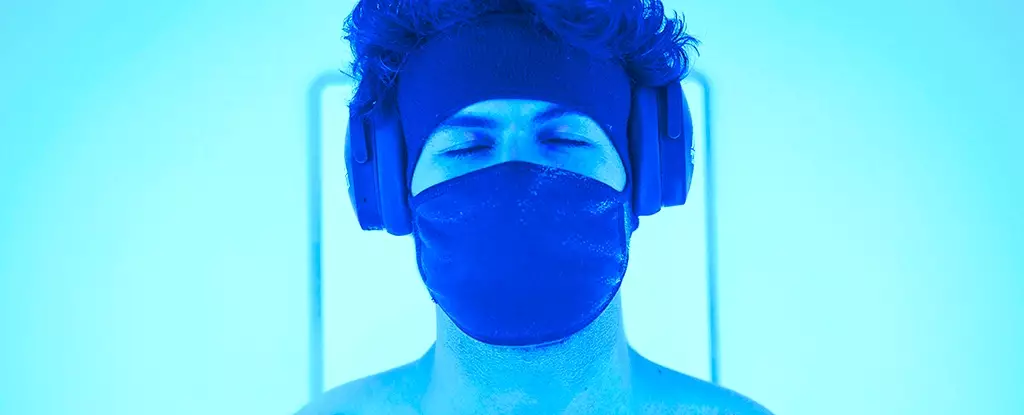In the modern quest for enhanced sleep quality, innovative methods constantly emerge, capturing the interest of researchers and health enthusiasts alike. One such method that has recently garnered attention is cryostimulation, a treatment that involves exposing the body to extreme cold temperatures—often around -90 °C (-130 °F). A groundbreaking study from the University of Poitiers in France has revealed that this chilling experience can improve not only sleep quality but also mood, bringing a unique perspective to the age-old connection between temperature regulation and restorative sleep.
The research involved 20 healthy participants, predominantly young adults with an average age of 23, who underwent a rigorous five-day testing period. Each individual participated in a daily five-minute session inside a cryotherapy chamber, followed by unrestricted daytime activities with specific restrictions on alcohol, caffeine, and physical exercise. Utilizing advanced sensors, the researchers monitored their brain and heart activity overnight to gather concrete data on the participants’ sleep patterns.
The results were promising, showing a significant boost in slow-wave sleep—often termed the most restorative phase of the sleep cycle—after the cryostimulation sessions. On average, participants experienced an increase of 7.3 minutes of this deep sleep during the first two cycles of the night, a notable find that suggests potential benefits for memory consolidation and overall cognitive function.
Interestingly, the study highlighted discrepancies in how male and female participants responded to cryostimulation. Women appeared to benefit more significantly from the treatment in terms of mood elevation and anxiety reduction. This raises questions about the necessity of adopting a gender-specific approach when it comes to implementing such treatments. Although the study doesn’t provide conclusive reasons for these variances, it emphasizes a crucial avenue for future research—tailoring interventions based on individual physiological responses could amplify the effectiveness of cryotherapy.
Cryostimulation’s potential extends beyond sleep improvement. The physiological impacts, such as the reduction of inflammatory markers and enhanced recovery for athletes, have long been acknowledged. By moderating the body’s inflammatory response, cryotherapy could offer additional health benefits, potentially addressing chronic conditions and improving general well-being. This multifaceted utility positions cryostimulation as a versatile treatment, promising enhancements not just in sleep but overall health management.
Despite the promising findings, the study does leave critical research gaps. Notably, it did not delve deeply into the mechanisms that connect cryotherapy to improved sleep quality. As researchers noted, the study’s small sample size and lack of extensive variability—such as the duration of cryotherapy exposure or the timing relative to sleep onset—afford ample opportunity for further investigation. Understanding how cryostimulation physiologically influences sleep architecture could unveil new strategies for treating sleep disorders and related health issues.
The practice of cold therapy isn’t a modern invention. Its roots can be traced back to ancient Greece, where therapeutic cold exposure was recognized for its health benefits. Today, as the approach gains traction in scientific circles, there’s a renewed interest in its application within contemporary health practices. As researchers pave the way for larger studies, the goal will be to refine the delivery of cryotherapy and understand its long-term impacts on both mental and physical wellness.
With more individuals struggling with sleep disturbances and mood disorders than ever before, the quest for effective solutions is imperative. Cryostimulation may just be on the frontier of a revolution in sleep science. Its potential to foster deeper sleep and a more robust mental state offers a compelling incentive for investigation—prompting both an inquiry into its practical applications and an exploration of the science behind its efficacy. As further studies unfold, this bold, chilling approach could lead to groundbreaking improvements in how we tackle sleep challenges, offering refreshing perspectives in a rapidly evolving field.


Leave a Reply